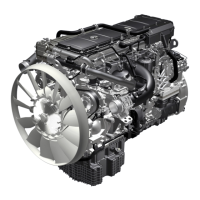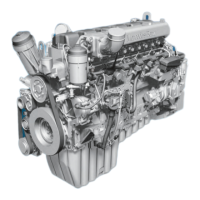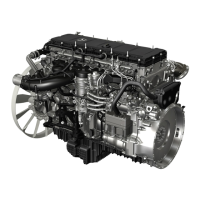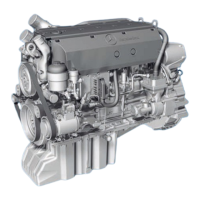Emission reduction
46
Environmental protection
Introduction of New Generation of 4-Cylinder Inline Engines, OM 651
q
Emission reduction measures
The wide range of new technical features used in the
development of engine 651 have made it possible to
reduce the level of raw emissions even further. The
engine complies with the Euro 5 standard even
without BlueTEC technology. The new engine has the
potential to fulfill the limit values for the Euro 6 stan-
dard and the US BIN5 standard.
Mechanical measures
• Oil pump volume-controlled at the clean oil side
with regulated pressure level (performance map)
• Friction-optimized vacuum pump
• Piston pins with PVD coating
Technical implementation
Raw emissions have been further reduced by opti-
mizing the following components involved in the oil
circuit:
• The spray nozzle for the timing chain has been
omitted
• The control pressure has been lowered to 2.5 bar
• Shutoff-capable piston crown cooling
• Lanchester balance shafts supported by roller
bearings
• Intermediate gears
• Reduced pressure resistance
Reduction of CO
2
emissions
The new Common Rail technology provides the basis
for greater injection timing flexibility, which produces
a smoother running engine with lower fuel consump-
tion and reduced emissions. Thi
s has allowed the level
of CO
2
emissions to be reduced by up to 13%. The new
features responsible for this improvement include the
increase in rail pressure by 400 bar to a maximum of
2,000 bar and the new piezo injector concept with
direct nozzle needle control.
Reduction of nitrogen oxides
The combustion process has been optimized to
sustainably reduce raw emissions by lowering the
compression ratio from 16.5:1 to 16.2:1.
Significant improvements have been achieved, espe-
cially with respect to nitrogen oxides.
The proportion of nitrogen oxides in the exhaust gas is
lowered through
exhaust gas recirculation.
i Note
The abbreviation "PVD" stands for "Physical Vapor
Deposition". This is a coating procedure / thin-film
technology whereby a coating is formed directly
on a material surface through condensation of a
material-containing vapor.
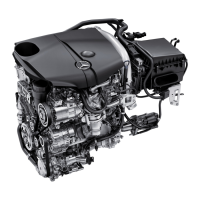
